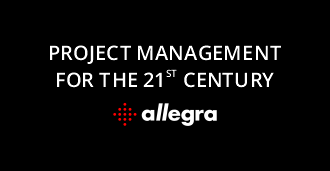Getting Things Done (GTD method)
Overview
David Allen in his Book “Getting Things Done” describes a method for personal task management and has inspired many good GTD method software applications for personal use. He suggests to classify all “stuff” that appears in your mind, on your desk, or your computer according to a particular scheme. “Stuff” is defined by David Allen as
“Anything you have allowed into your psychological or physical world that doesn’t belong where it is, but for which you haven’t determined the desired outcome and the next action step.”
We call this stuff “items” from here on. Examples for such “items” are ideas, open points, issues, bug reports, customer inquiries, travel plans, etc. You cannot control the stream of incoming items, they will come to your attention in any case .
According to the GTD method all items are collected in your personal in-basket. The in-basket, as any other basket, may be an electronic container, or a physical container like a box in your office, or a combination of both.
You must regularly review all items in your in-basket. There are three possible outcomes from this analysis:
- An item is “actionable“, that is, to obtain the desired outcome triggered by this item you have to do something.
- An item is “non-actionable“, you may just have to file it away for later use or reference.
- An item requires a sequence of actions to be taken care of, possibly involving many people and stretching over a longer period of time. As a result from the analysis process you create or modify “planned items“. “Planned items” for example can be part of a project work breakdown structure, a product structure, or a Scrum product backlog.
For non-actionable items you have in the GTD method three baskets where you can place them:
- Trash, you just don’t consider this item anymore at all.
- Incubator. Here you place items that do not require any action at this time or in the near future, but might have to be considered later. These items serve as crystallization points for future work. Example for items in this basket are ideas, feature requests, improvements, etc.
- Reference. This basket contains material you might need someday,
for example FAQ, requirements, standards, etc.
For actionable items you have in the GTD method three baskets where you can place them:
- Next actions. This is where you place items that you want to work on in the near future. There is no real planning or deadline for next actions. If there are deadlines or dates that must be considered, the items should be placed into the Calendar basket. Next actions can be for example calls, support requests, features to work on, etc.
- Calendar. This is where you place all actions that have a strict relation to this date or time, e.g., a deadline, or a meeting time, or similar. The calendar contains three types of items: appointments, day-specific actions, and day-specific information, what you want to know at a specific day.
- Delegated/waiting. This basket contains actions you have delegated to somebody else. Placing actions into this basket automatically moves this item to another persons in-basket. You keep a reminder in our own basket.
The “planned items” basket is regularly reviewed. Part of the items in this basket may be moved to one of the actionable baskets, or the planned items set is modified.
In-basket

The in-basket serves as a collection of anything that you may be concerned with. Typical sources for input are e-mails from colleagues or customers, phone calls, meetings, your own ideas, documents, and actions delegated by others to you.
You review your in-basket regularly, for example every morning. As long as you have not moved an item from the in-basket to either one of the non-actionable baskets, actionable basket, or planned items basket, the item stays in your in-basket. It should be your goal to regularly get your in-basket into an empty state.
Items show in your in-basket if you are newly responsible for an item according to the RACI scheme. This is the case when an item was just created with you as a responsible, or when you have been made responsible for an item that somebody else was responsible for previously.
Next actions

The next action basket is the center of your daily action management activities. It contains all items that you yourself want to take care of as soon as possible.
Anything taking less than two minutes you do right away, without placing it into this basket. Only you yourself can place items in this basket, and nobody else.
Items that need to be done by a specific date or time you place into the calendar basket. Items that you have delegated you put into the delegated/waiting basket.
Once an item has been either transferred to another responsible or has been closed, it is removed from the next actions list.
Planned items

An item might require more than a single action to be taken care of, and might involve a number of people to work on. Such items are moved to the “planned items” basket and detailed further there.
Planned items are typically organized in traditional project work breakdown structure, product structures, or product backlogs, release backlogs or iteration backlogs. It is beyond the scope of this article to describe how to develop such structures. In general, it is wise to structure the planned items according to intermediate and final deliverables, like documents, features, software, hardware, mechanical parts, etc. This makes it easy to measure progress later on. It is less wise to structure the planned items along actions, like “write requirements”. So rather than developing a true work breakdown structure you should develop more like a document breakdown structure.
A project plan might stretch over many months or even several years. As work on the project progresses, the plan may have to be refined and revised.
Calendar

The calendar basket contains three types of items:
- appointments
- day-specific actions
- day-specific information
Appointments you have made, for example attending a project meeting, or a visit to a customer. This requires you to be there at a certain time and place.
Day-specific actions are those things you need to do sometime until or throughout a specific day, for example to call somebody, or finish writing a sales proposal. The time when you do this is not important.
Day-specific information is something you want to know by a specific day. For example, you need some input for your project
planning actions, or you are trying to organize a meeting and you need the OK of those invited. You can also place reminders here, for example when you want to call somebody after they return from a business trip.
Delegated/waiting

If you are not the right person to do something about an item, you can delegate it. You need a reminder that you have transferred the item to somebody else.
In Getting Things Done software the delegated/waiting basket contains items you have delegated to somebody else and that have not been completed. In your delegated/waiting basket you keep a copy of the original item, while the original goes to the new responsible person. In an electronic system you could keep a link to the original item in your copy. You can tag this copy with a personal follow-up date so that you will be reminded to look after this item at a specific day.
Trash

As items enter your in-basket, there may be things that do not require any action on your or anybody else part
and that do not contain information valuable enough to keep. Such items you can directly move into the trash can. You should empty the trash can on a regular basis.
Incubator

In the GTD method the incubator basket permits you to collect things that are not urgent, but that you might want to get to sometime in the future. Items in the incubator basket serve as crystallization points for future activities and projects. You could think of this basket as a “parking lot for future projects“.
For example, your customers gave you some nice ideas on how to improve your product. However, at this time you do not have the capacity to include such features in the next product releases since it would require a major redesign. Thus, you put this idea into the incubator basket. You review this basket regularly, and some time in the future you might be able to actually implement the idea in a project.
Reference/Favorites

In the GTD method the reference basket serves as a place where you collect information that is or might be of some value to you or others. It is important that you organize items here in proper categories to make it easy for you to retrieve them.
Examples for items in the reference basket are standards, presentations, contracts, and project specific documentation. It is helpful to have one folder in your reference basket for general items, that do not match any of your other categories.


